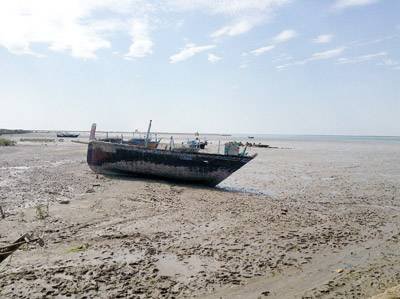
“Abdul Rasool Alwani, who was posted as Malaria Supervisor at Taluka Hospital Jati, recalls receiving a message from the Medical Superintendent to reach the hospital immediately as the Pakistan Army had taken control of the hospital after a cyclone and heavy rainfall on the night of May 18-19, 1999.
Twenty-five years ago, on May 19, 1999, Cyclone OA2 struck the coastline of Sindh, causing massive destruction in Thatta and Badin districts. At the time, Sujawal was part of the historic Thatta district. As many as 6,500 people from coastal villages in the two districts who had gone fishing in the high seas went missing, and most of them were believed to be dead.
The date May 19, 1999, turned out to be the most horrific and awful for the fisher folk of the coastal areas of Thatta and Sujawal districts, who were battered by a cyclone that devastated almost everything across the coastal region. Taluka Jati, which was part of Thatta district and is now within the revenue limits of Sujawal district, was declared the most affected area by the cyclone.
Dr Wazir Ali Karimi, who was the Medical Superintendent of Taluka Hospital Jati during the cyclone emergency, said that the hospital lacked the efficiency to deal with such a critical situation, but despite that, they coped with the emergency thanks to the dedication of the staff. The rescue teams of the Pakistan Army imposed emergency measures in the area and set up a medical camp at the hospital to treat patients from the affected areas. Khamiso Muhammad Khan, who was serving as a senior clerk and administrator at the hospital, said, “Bodies were wrapped in bushes and thorny shrubs in the remote areas of Taluka Jati.” He added that dead bodies were brought to the hospital in tractor trolleys and Suzuki pickups. A lady health worker, who wished to remain anonymous, said she witnessed men and women wailing inconsolably over the loss of their beloved ones.
Besides the loss of human lives and infrastructure, the coastal areas of Sindh witnessed drastic environmental changes, including erosion of land and the extermination of several species of fish, plants, and crops.
Seasoned journalist Haji Zahid Ishaque believes that Cyclone OA2 induced degradation of the Indus delta, which was later exacerbated by various factors.
Haji Zahid Ishaque revealed that fish species such as poppeti, Gandar, Danti, and Goji almost vanished after the cyclone and rainfall. He added that as many as 1 million acres of agricultural land came under seawater and became uncultivable forever. Moreover, he said that different types of crops and plants also became extinct after the calamity.
The residents of Union Council Kothi and Karmalak are still making efforts to rebuild themselves despite the passage of more than two decades. Noor Muhammad Themore of the Pakistan Fisher Folk Forum said that due to the lack of interest from elected representatives of the district and concerned authorities, the fishermen communities of Sindh are still bearing the brunt of the disaster. The areas affected by the cyclone still lack basic facilities, and a considerable population of these villages has left fishing and moved to urban areas of the country in search of a better livelihood.”




